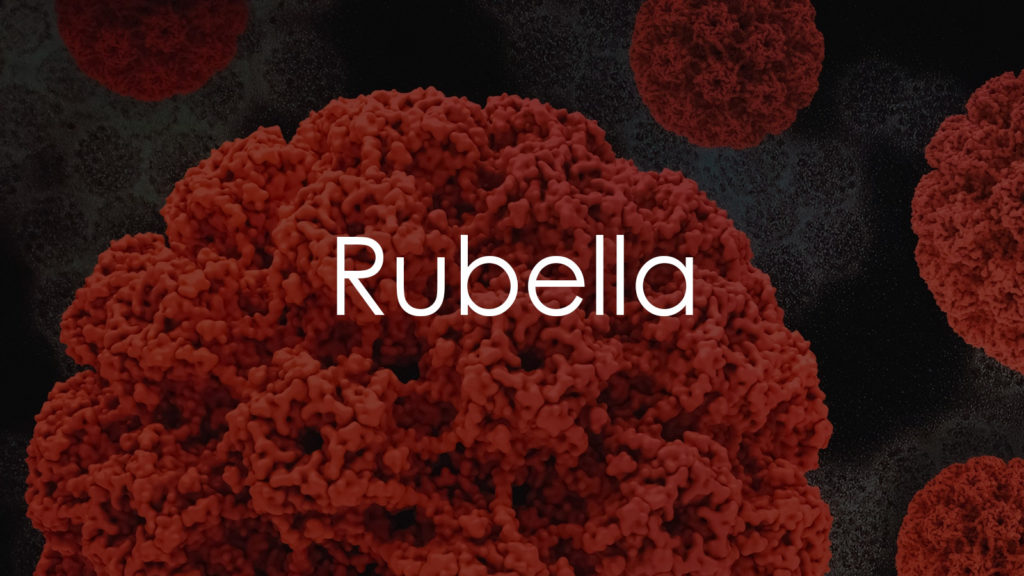Symptoms of rubella, also known as German measles, can range from mild to severe and typically appear about two to three weeks after exposure to the virus. Recognizing these symptoms early is crucial for timely diagnosis, treatment, and preventing the spread of the virus.

Early Symptoms
Mild Fever
Low-Grade Fever
One of the initial signs of rubella is a low-grade fever, typically around 99-101°F (37.2-38.3°C). This fever usually appears a few days before other symptoms.
Fever Duration
The fever usually lasts for a few days and may come and go during the early stages of the infection.
Malaise and Fatigue
General Malaise
Individuals with rubella often experience a general feeling of malaise or unwellness. This can include feelings of discomfort, fatigue, and a lack of energy.
Fatigue
Fatigue is common and can be moderate to severe, impacting daily activities and overall well-being.
Respiratory Symptoms
Runny Nose
A runny nose, or rhinorrhea, is one of the early symptoms of rubella. The nasal discharge is usually clear and watery.
Sore Throat
A sore throat often accompanies the runny nose. This can cause mild to moderate discomfort and may be mistaken for a common cold.
Rash
Rubella Rash (Exanthem)
Characteristics
The rubella rash is typically the most recognizable symptom. It starts as pink or light red spots that first appear on the face and then spread to the neck, trunk, arms, and legs.
Progression
The rash usually appears about two to three days after the onset of initial symptoms. It progresses from the face downward and typically covers the entire body within 24 hours.
Duration and Disappearance
Rash Duration
The rash usually lasts for about three days. It may be slightly itchy but is generally not painful.
Rash Disappearance
The rash fades in the same order it appeared, starting from the face and moving downwards. It often disappears without peeling or significant residual effects.
Lymphadenopathy
Swollen Lymph Nodes
Cervical and Occipital Lymph Nodes
One of the hallmark symptoms of rubella is the swelling of the lymph nodes, particularly those behind the ears (postauricular) and at the back of the neck (occipital).
Duration and Tenderness
The swollen lymph nodes can be tender to the touch and typically last for several days to a week. This symptom often persists even after the rash has resolved.
Joint Symptoms
Arthralgia
Joint Pain
Arthralgia, or joint pain, is a common symptom of rubella, especially in adolescents and adults. The pain can affect various joints, including the fingers, wrists, and knees.
Severity and Duration
Joint pain can range from mild to severe and typically lasts for about three to ten days. In some cases, the pain may persist for weeks.
Arthritis
Inflammation
In addition to joint pain, some individuals may experience arthritis, which is inflammation of the joints. This can lead to swelling, redness, and warmth around the affected joints.
Impact on Mobility
Arthritis caused by rubella can temporarily impact mobility and make daily activities challenging.
Eye Symptoms
Conjunctivitis
Red, Watery Eyes
Conjunctivitis, or inflammation of the conjunctiva, is a common symptom of rubella. It causes red, watery eyes that may be sensitive to light.
Swelling and Discharge
The eyes may become swollen and produce a watery or mucous-like discharge, contributing to discomfort and impaired vision.
Gastrointestinal Symptoms
Nausea and Vomiting
Mild Nausea
Some individuals with rubella may experience mild nausea. This symptom is more common in adults than in children.
Vomiting
In rare cases, nausea can be accompanied by vomiting, leading to dehydration and further discomfort.
Loss of Appetite
Anorexia
Loss of appetite, or anorexia, is frequently observed in individuals with rubella. This can lead to weight loss and nutritional deficiencies if it persists.
Neurological Symptoms
Headache
General Headache
A general headache is a common symptom of rubella. It can be mild to moderate in intensity and may occur alongside fever and other symptoms.
Persistent Headache
For some individuals, the headache can persist and become more intense as the infection progresses.
Encephalitis
Inflammation of the Brain
Encephalitis, or inflammation of the brain, is a rare but serious complication of rubella. Symptoms include severe headache, high fever, confusion, seizures, and loss of consciousness.
Medical Emergency
Encephalitis is a medical emergency that requires immediate hospitalization and intensive care.
Complications and Severe Symptoms
Congenital Rubella Syndrome (CRS)
Maternal-Fetal Transmission
Rubella can cause severe complications if contracted by pregnant women, particularly during the first trimester. The virus can be transmitted to the fetus, leading to Congenital Rubella Syndrome (CRS).
Birth Defects
CRS can result in a range of birth defects, including heart abnormalities, developmental delays, hearing and vision impairments, and other congenital abnormalities.
Thrombocytopenia
Low Platelet Count
Thrombocytopenia, or a low platelet count, can occur as a complication of rubella. This can lead to increased bleeding and bruising, including nosebleeds and petechiae (small red or purple spots on the skin).
Treatment and Management
Treatment involves monitoring platelet levels, managing symptoms, and sometimes administering medications to increase platelet production. Severe cases may require platelet transfusions.
Conclusion
Recognizing the symptoms of rubella is crucial for early diagnosis and effective treatment. Symptoms range from initial mild fever, malaise, and respiratory issues to the characteristic rash and swollen lymph nodes. Severe complications, such as arthritis, encephalitis, and Congenital Rubella Syndrome (CRS), underscore the importance of timely medical intervention. By understanding these symptoms, individuals can seek appropriate medical care, reducing the risk of complications and preventing the spread of the virus. Early vaccination remains the most effective measure for preventing rubella and its associated complications.